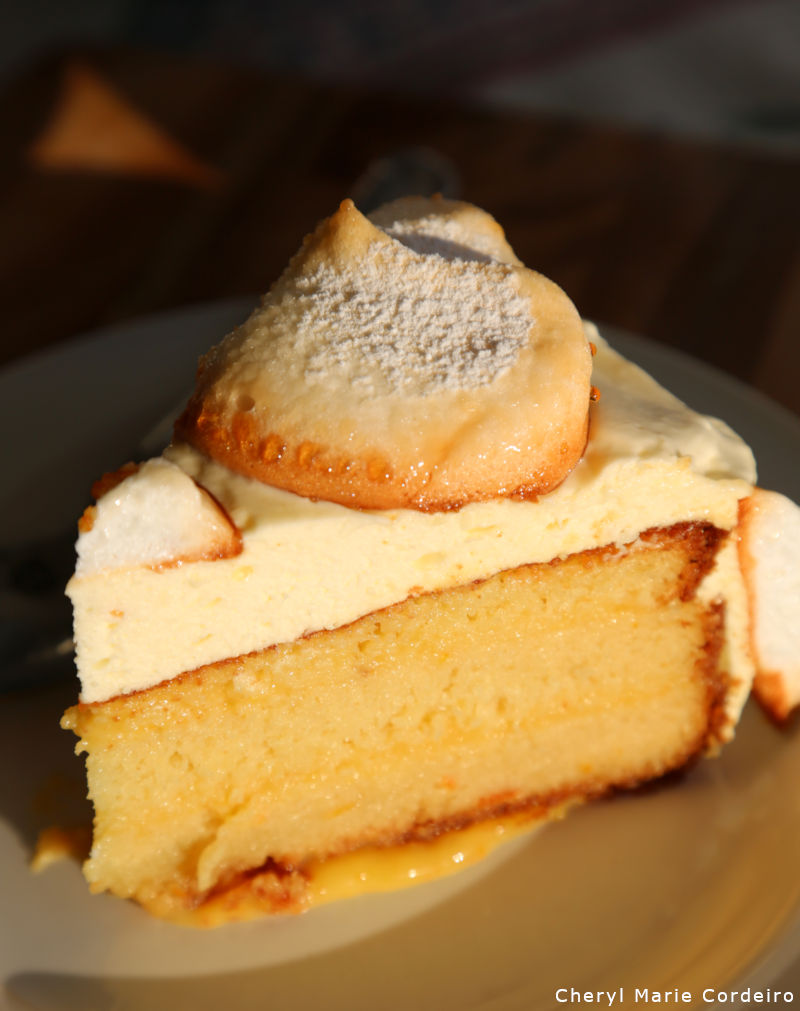
Spanish orange almond cake, with orange crème anglaise, a variation of the Eurasian almond sugee cake. Topped with meringue.
Text & Photo © JE Nilsson & CM Cordeiro 2019
One of my favourite things to do when back in Sweden is to bake, and oddly enough, go back to cooking Straits Chinese / Peranakan dishes. Easter culinary traditions (as with Christmas, weddings etc.) however, are most often influenced from my Portuguese / Spanish heritage. This year, I thought to bake a variation of my father’s mother’s Eurasian sugee cake, a Spanish orange almond cake [1], layered with orange crème anglaise and topped with meringue. David Lebovitz has a brilliant recipe to orange crème anglaise to which anyone can refer/use [2].
Recipes and culinary influences travel. A Swedish recipe I find quite close to the almond sugee cake is the traditional Swedish mazarin tart/cake, to which I had also made a small batch. With sharp vocal overtones of one of my grandaunts on my father’s side echoing in my head, and with the image of my father’s mother standing close by, I went through the ingredients and likewise instructions on how-to, to this Spanish orange cake:
Ingredients
4 large eggs
100 grams castor sugar
Juice from 2 medium sized oranges and a half lemon
Grated rind of 1 orange and 1 lemon
150 grams fine ground almonds (skin removed)
150 grams semolina (soaked in 150g melted butter for an hour prior to combining in the mixing bowl)
2 tbsp of Grand Marnier
I separated the egg yolks from the egg whites, whisking in the beaten egg whites after all wet ingredients were well combined in the mixing bowl. This recipe also has a reduced sugar content in the main almond cake, with the sweetness filled in with the meringue topping and orange crème anglaise. The resulting cake is moist, yet not too dense. I find it perfect to make a day in advance of any party serving. Baked separately at a constant 125 deg C oven for about 40 minutes, the meringue drops once cooled and out of the oven, were placed on top of the cake. The meringue will moisten and soften as it sits for some hours over the cake, whilst keeping its caramelized flavour.
Accompanying this cake to the Easter breakfast table are six eggs, boiled to six minutes in blue butterfly pea flowers. If left in the pot for some time, the egg shels will be dyed a light blue. To add different colours to the shells of the eggs, the eggs were dyed over with food colouring.
It’s been clear skies and gorgeous weather through the Easter weekend along the Swedish west coast. Temperatures seem well above 10 degrees celsius, with flora and fauna coming to life, busy with new homemakings.
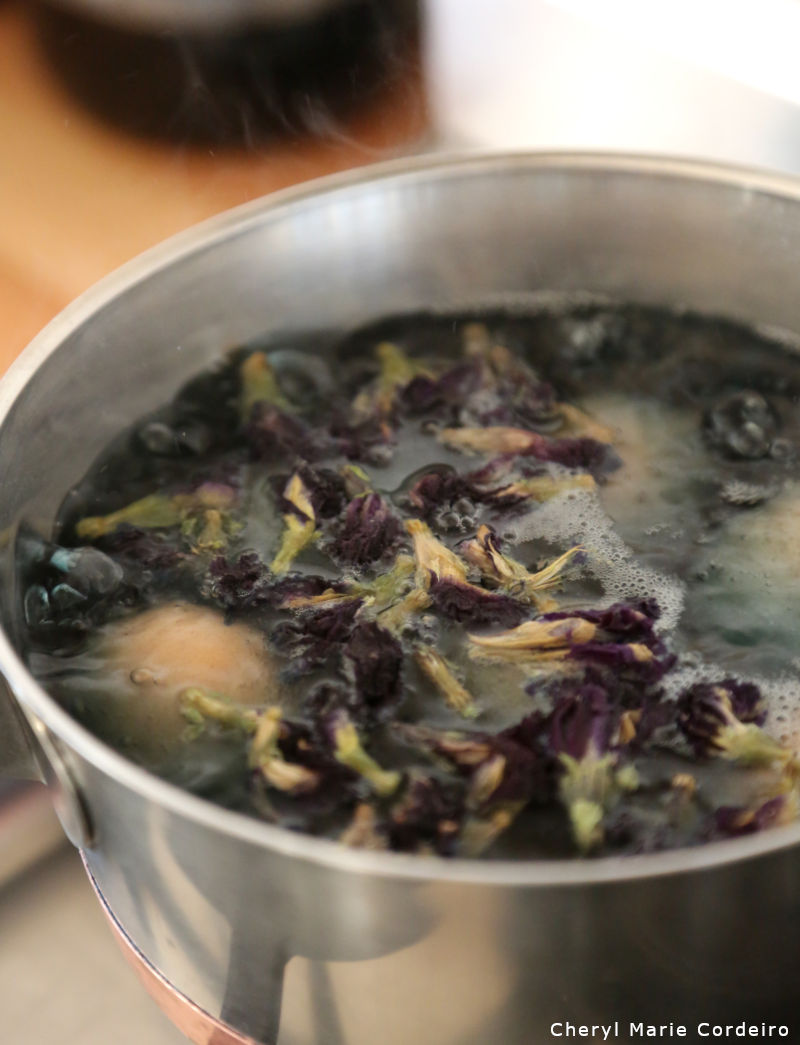
Eggs on the boil with blue butterfly pea flowers. Butterfly pea flowers are used in different types of Nonya kueh kueh and desserts, such as Kueh Salat and Pulot Tai Tai.
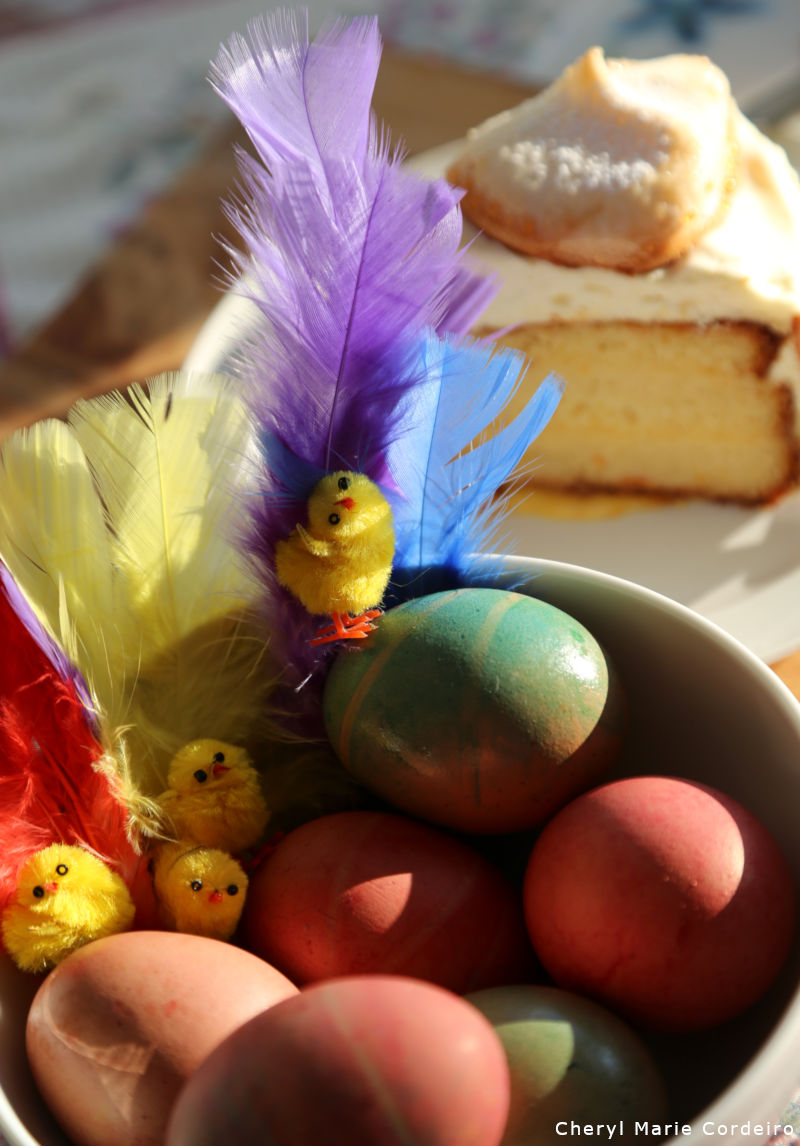
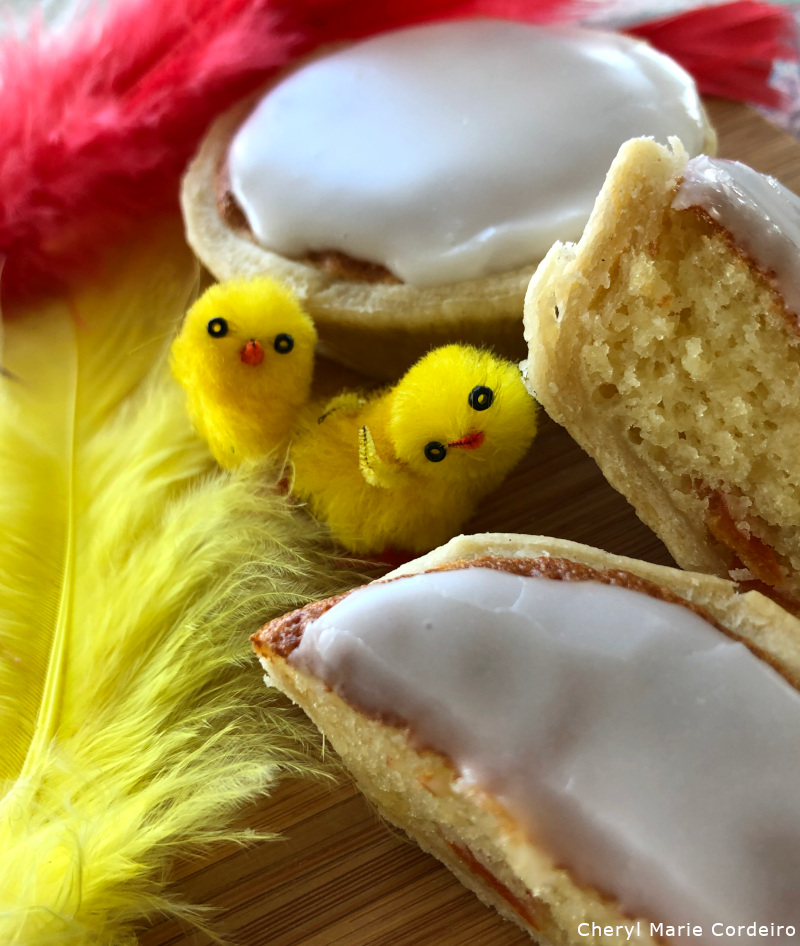
An accompanying small batch of Swedish mazarintårta.
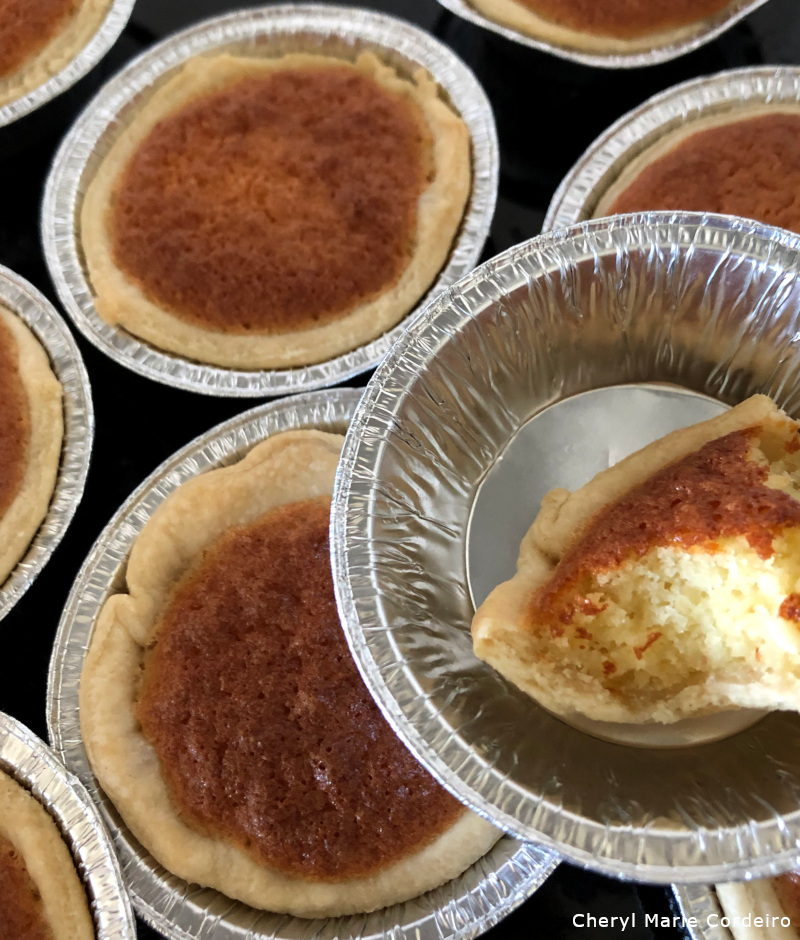
References
[1] Postres Originales (2015). Pastel de Naranja y Almendras – Casero y Fácil. Internet resource at https://youtu.be/IGrqiSYc1oM. Retrieved 21 Apr. 2019.
[2] Lebovitz, D. (2011). Orange crème anglaise, David Lebovitz. Internet resource at https://www.davidlebovitz.com/orange-creme-anglaise-custard-sauce-recipe/. Retrieved 21 Apr. 2019.